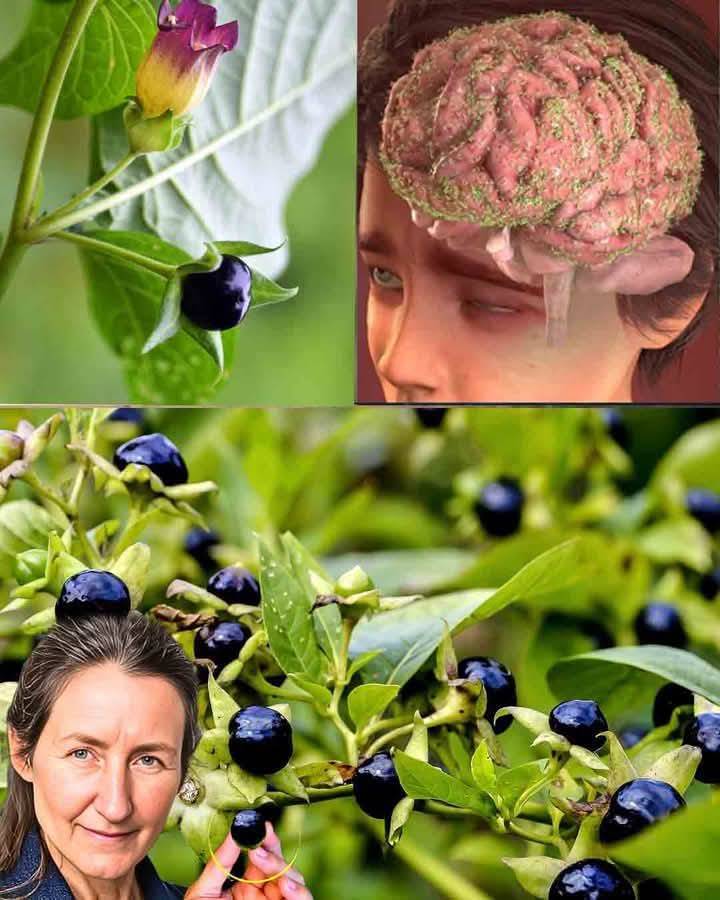ADVERTISEMENT
### **It Grows Everywhere, but This Stunning Plant Hides a Dark and Dangerous Secret**
The natural world is full of beauty and intrigue, but lurking within this beauty is an often unseen danger. Among the vast array of plants that can be found in almost every corner of the world, some might seem harmless or even beneficial at first glance, only to reveal their sinister and potentially deadly qualities when examined more closely.
One such plant that perfectly fits this description is **poison hemlock (Conium maculatum)**. Widely distributed across North America, Europe, and parts of Asia, poison hemlock is a perennial herb that can be found growing in fields, along roadsides, and in damp, disturbed soils. It often blends in so seamlessly with its surroundings that many people who encounter it have no idea that they are standing next to a plant that is capable of causing serious harm, or even death, if consumed.
But while poison hemlock is often overshadowed by other, more well-known dangerous plants, it’s worth learning about not only because of its toxic nature, but also due to its striking appearance and historical significance. Its presence in modern landscapes and gardens, alongside its deadly potential, makes it a plant deserving of attention and respect.
In this article, we’ll explore poison hemlock in-depth, uncovering the hidden danger it poses, the symptoms of poisoning, its history, and the reasons why it continues to proliferate despite its deadly reputation. We’ll also explore the importance of education when it comes to recognizing this plant, and why this unassuming herb hides such a dark and dangerous secret.
—
### **What Is Poison Hemlock?**
Poison hemlock, scientifically known as **Conium maculatum**, is a highly toxic biennial plant in the carrot family (Apiaceae). This plant, which can grow up to 10 feet (3 meters) tall, often appears in rural and suburban environments where conditions are moist and the soil is rich. While it might initially appear as an innocent weed, it harbors a dark secret: it contains potent toxins that can lead to death if consumed.
Poison hemlock grows best in areas with abundant sunlight and moisture, often appearing in disturbed or cultivated fields, roadsides, ditches, and along riverbanks. It produces tall, hollow, and hairless stems, which are often spotted or streaked with purple blotches. The leaves are finely divided and resemble those of other members of the carrot family, such as parsley or dill.
In the late spring and summer, poison hemlock blooms with clusters of small white flowers in an umbrella-like arrangement, often referred to as an **umbel**. These flowers resemble those of many other common plants in the carrot family, including edible herbs like celery or carrots. This similarity to edible plants is one reason why poison hemlock is so dangerous—it can easily be mistaken for harmless plants in the wild.
Despite its deceptively beautiful flowers and striking appearance, poison hemlock’s true danger lies in its **alkaloids**, particularly **coniine**. These alkaloids, which affect the nervous system, can be fatal if consumed.
—
### **The Dark and Dangerous Secret: Poisoning and Toxicity**
The most disturbing aspect of poison hemlock is its toxicity. As mentioned, the plant contains **coniine**, a neurotoxin that disrupts the functioning of the nervous system. When ingested, even small amounts of any part of the plant—whether the stems, leaves, seeds, or roots—can cause severe poisoning and, in many cases, death.
**Symptoms of Poison Hemlock Poisoning:**
The symptoms of poisoning from poison hemlock usually begin within hours of ingestion and can progress rapidly. Initial signs may include:
– **Nausea and vomiting:** These early symptoms often follow ingestion, as the body reacts to the toxins.
– **Salivation:** Excessive drooling or salivation can occur as the body tries to expel the toxins.
– **Abdominal pain and cramping:** Severe stomach discomfort is common, accompanied by diarrhea.
– **Weakness and fatigue:** As the toxins enter the bloodstream, the victim may begin to feel increasingly weak, with fatigue setting in.
– **Difficulty breathing:** As the toxins begin to paralyze the respiratory muscles, the victim may have trouble breathing. This is a critical sign of impending respiratory failure.
– **Dilated pupils and blurred vision:** A common effect of coniine poisoning is the dilation of the pupils, leading to blurry vision.
– **Severe neurological effects:** As the poison spreads throughout the body, it can lead to paralysis, convulsions, and even coma.
If not treated promptly, **death** can occur from respiratory failure, as the paralysis spreads to the muscles responsible for breathing. It’s a grim reminder that, despite its unassuming appearance, poison hemlock is one of the deadliest plants in the world.
—
### **Historical Significance: The Legacy of Poison Hemlock**
One of the most infamous historical associations with poison hemlock comes from ancient Greece. The plant is most well-known for its role in the death of the philosopher **Socrates**, who was sentenced to die by drinking a poison made from hemlock in 399 BCE. In one of the most famous moments in Western philosophical history, Socrates calmly drank the poison, which led to his slow and painful death.
In the centuries that followed, poison hemlock became infamous in various cultures for its use as an execution or assassination method, as its toxicity made it an ideal choice for those wishing to poison their enemies or rivals. Despite its dark association with death, it was also recognized for its medicinal properties in ancient times, though these uses were far less common than its reputation as a toxic plant.
Today, poison hemlock is still regarded as a dangerous and often deadly plant, but it is no longer used as a method of execution or assassination. However, its historical ties to power, death, and political intrigue continue to fascinate people across the world.
For Complete Cooking STEPS Please Head On Over To Next Page Or Open button (>) and don’t forget to SHARE with your Facebook friends
